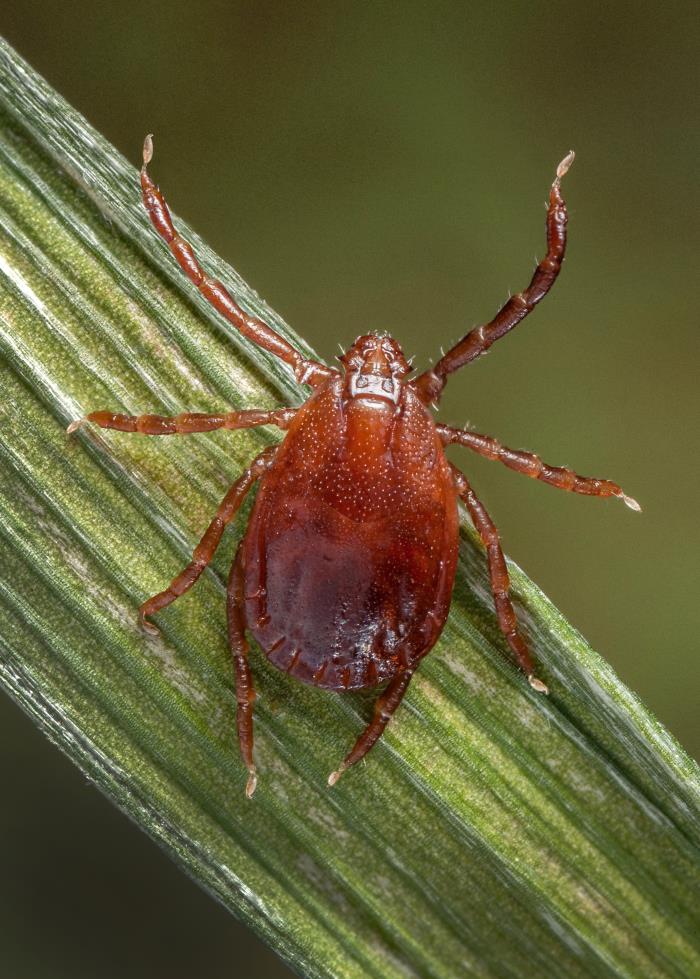Longhorned tick found in three areas of Missouri

COLUMBIA, Mo. — University of Missouri researchers are tracking the invasive longhorned tick, which causes weight loss, lost pregnancies and even death in cattle.
Researchers from the MU College of Veterinary Medicine found the tick on a Linn County pasture in August 2022. The finding marks the northernmost appearance of the tick in Missouri. It also appeared in June 2021 near Springfield.
Found in 17 states since 2017, the longhorned tick is a significant concern for cattle producers, says Rosalie Ierardi, an anatomic pathologist at the MU Veterinary Medical Diagnostic Laboratory. Hundreds of the ticks can attach to a single animal, causing irritation and significant blood loss.
Ierardi says the tick can spread quickly. Females produce up to 2,000 eggs at a time. Since females can reproduce without mating with males, a single female can introduce a population of ticks into a new area.
The biggest reason veterinarians are concerned about this tick is that it transmits a parasite of cattle, Theileria orientalis Ikeda, which destroys red blood cells. Symptoms include jaundice, weakness and spontaneous abortions. The symptoms closely resemble those of bovine anaplasmosis, which is widespread in Missouri. A blood test is needed to tell the two diseases apart.
In a press release, Ierardi said, “There is no approved treatment for Theileria orientalis. Management typically focuses on reducing tick numbers and minimizing the impact of stress and other health issues that may affect a cow’s ability to mount a strong immune response.”
Producers can reduce risk by keeping cattle away from wooded areas and other habitats where ticks live, and clearing weeds and brush regularly. Consider inspecting cattle for ticks during handling events, says Ierardi. Livestock markets may provide opportunities for spread, so checking and/or treating new introductions is especially important. For specific herd health advice, consult a veterinarian.
Native to Korea, China, Japan and eastern Russia, the longhorned tick has been well-established as an invasive species in Australia and New Zealand since the 1950s.
The longhorned tick will continue to spread within North America in the coming years, leading to increased transmission diseases to cattle and possibly also to humans, according to Ierardi’s Ph.D. adviser, Ram Raghavan.
Raghavan, an MU professor in the College of Veterinary Medicine and the School of Health Professions, has tracked the spread of ticks in the U.S. for more than 15 years. He predicted which areas of the U.S. would be suitable for establishment of the invasive longhorned tick in a 2019 study. This has been supported by real-world data over the last several years.
Like other ticks, the longhorned tick can easily travel unnoticed on livestock, humans and pets. Hosts include cattle, deer, dogs, humans, raccoons, opossums and other domestic and wild animals.
Although the longhorned tick transmits several human diseases in the regions where it originated, there is no evidence at this time that they transmit any human diseases in the United States, says Ierardi. Laboratory studies show that the tick can transmit Rocky Mountain spotted fever; researchers are studying the tick closely to learn more about how to manage this potential risk.
Strategies to avoid being bitten by the longhorned tick are the same as those for other ticks. Learn more from the U.S. Centers for Disease Control at www.cdc.gov/ticks. If you think you may have found an invasive tick, contact your local veterinarian, extension specialist or health department for assistance to have the tick identified.
For more information:
MU Extension publications (free download):
“Ticks and Tick-borne Diseases,” https://extension.missouri.edu/ipm1032
“Control of Anaplasmosis in Missouri,” https://extension.missouri.edu/g7705
Information about the longhorned tick from the USDA Animal and Plant Health Inspection Service: https://www.aphis.usda.gov/aphis/ourfocus/animalhealth/animal-disease-information/cattle-disease-information/cattle-vector-borne-diseases
Miss Clipping Out Stories to Save for Later?
Click the Purchase Story button below to order a print of this story. We will print it for you on matte photo paper to keep forever.

